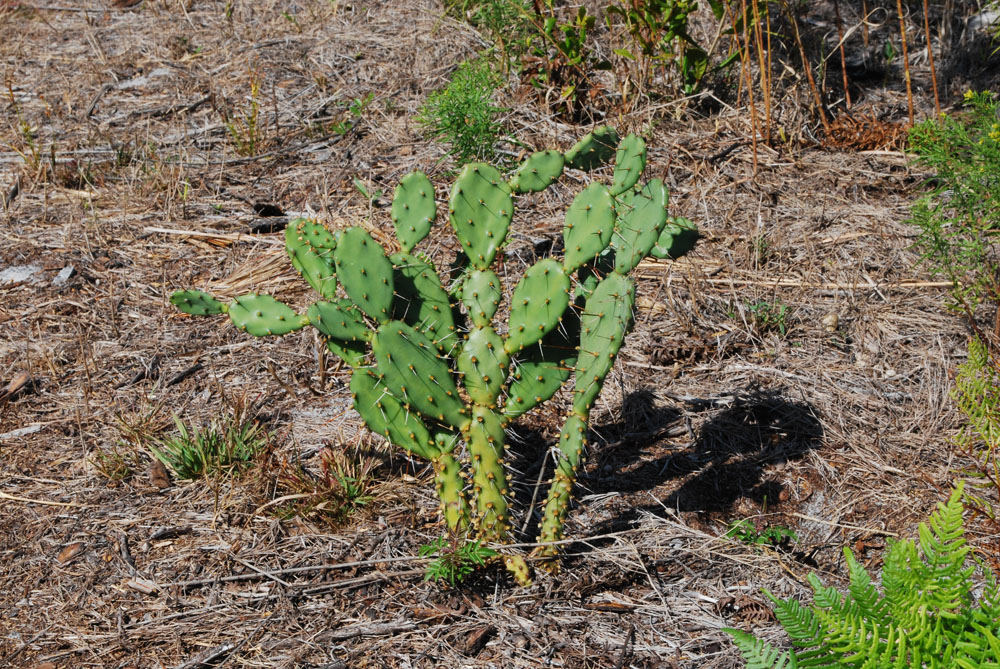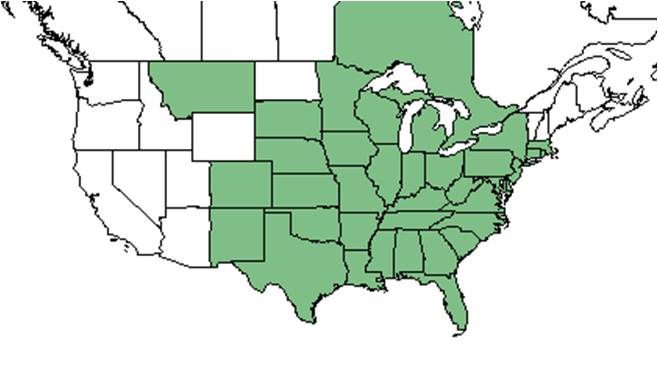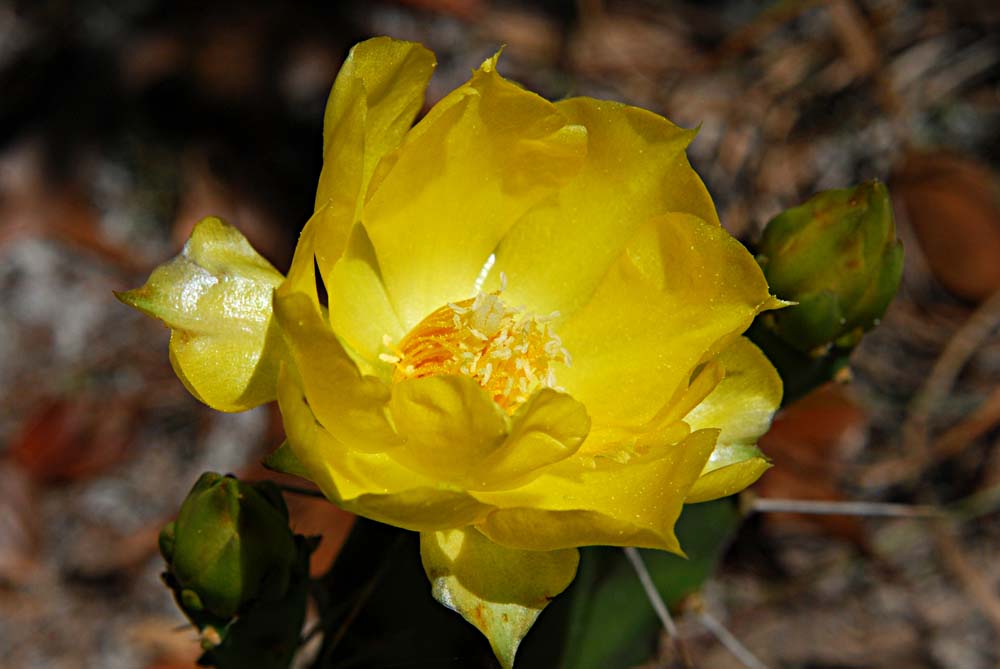Difference between revisions of "Opuntia humifusa"
KatieMccoy (talk | contribs) (→Seed dispersal) |
KatieMccoy (talk | contribs) (→Seed dispersal) |
||
| Line 39: | Line 39: | ||
===Seed dispersal=== | ===Seed dispersal=== | ||
| − | The fruit is eaten and dispersed by birds, rabbits, woodrats, prairie-dogs, mice, ground squirrels, and white-tailed deer <ref name="fs">[[http://www.fs.fed.us/database/feis/plants/cactus/opuhum/all.html]] Accessed: February 13 | + | The fruit is eaten and dispersed by birds, rabbits, woodrats, prairie-dogs, mice, ground squirrels, and white-tailed deer <ref name="fs">[[http://www.fs.fed.us/database/feis/plants/cactus/opuhum/all.html]] Accessed: February 13, 2016</ref>. |
===Seed bank and germination=== | ===Seed bank and germination=== | ||
Revision as of 09:34, 15 February 2016
| Opuntia humifusa | |
|---|---|

| |
| Photo by Wayne Matchett, SpaceCoastWildflowers.com | |
| Scientific classification | |
| Kingdom: | Plantae |
| Division: | Magnoliophyta - Flowering plants |
| Class: | Magnoliopsida – Dicotyledons |
| Order: | Caryophyllales |
| Family: | Cactaceae |
| Genus: | Opuntia |
| Species: | O. humifusa |
| Binomial name | |
| Opuntia humifusa (Raf.) Raf. | |

| |
| Natural range of Opuntia humifusa from USDA NRCS Plants Database. | |
Common names: devil's-tongue, eastern prickly pear
Contents
Taxonomic notes
Description
A description of Opuntia humifusa is provided in The Flora of North America.
Distribution
It is the only cactus to be widespread in the eastern United States [1]. It is found in southern Canada as well as the eastern United States (Goldstein and Nobel 1994).
Ecology
Habitat
Opuntia humifusa can occur in upland longleaf pines, sand dunes, Pinus clausa scrubs, open sand flats, sandhills, and pine/oak scrubs. It has been found in disturbed areas such as loblolly tree farms and roadside depressions. Associated species include Lyonia ferruginea, Lyonia lucida, Serenoa repens, Quercus geminata, Q. chapmanii, Persea humilis, Ceratiola, Osmanthus megacarpus, Rhynchospora megalocarpa, Galactia elliottii, and Smilax auriculata (FSU Herbarium).
It occurs in southern Canada, where average nighttime temperatures can reach -4 degrees Celsius. In order to prevent intracellular freeze dehydration and ice formation, individuals have an accumulation of sugars and mannitol in their cells (Goldstein and Nobel 1994).
Phenology
It has been observed flowering April through July and fruiting January, May and December (FSU Herbarium).
Root stocks and detached cladodes can propagate vegetatively for up to 12 months after detachment (Nobel and Castaneda 1998).
Seed dispersal
The fruit is eaten and dispersed by birds, rabbits, woodrats, prairie-dogs, mice, ground squirrels, and white-tailed deer [2].
Seed bank and germination
Fire ecology
Pollination
The following Hymenoptera families and species were observed visiting flowers of Opuntia humifusa at Archbold Biological Station (Deyrup 2015):
Apidae: Apis mellifera, Bombus impatiens, B. pennsylvanicus, Mellisodes communis
Halictidae: Agapostemon splendens, Augochlorella aurata, Augochloropsis sumptuosa, Halictus poeyi, Lasioglossum nymphalis, L. puteulanum
Megachilidae: Dianthidium floridiense, Lithurgus gibbosus, Megachile brevis pseudobrevis, M. policaris
Use by animals
Diseases and parasites
Conservation and Management
Cultivation and restoration
Photo Gallery
Flowers of Opuntia humifusa Photo by Wayne Matchett, SpaceCoastWildflowers.com
References and notes
Deyrup, M.A. and N.D. 2015. Database of observations of Hymenoptera visitations to flowers of plants on Archbold Biological Station, Florida, USA.
Florida State University Robert K. Godfrey Herbarium database. URL: http://herbarium.bio.fsu.edu. Last accessed: October 2015. Collectors: Loran C. Anderson, Michael Blaker, M. Borgman, James R. Burkhaulter, George R. Cooley, R.J. Eaton, Patricia Elliott, J. Kevin England, Robert K. Godfrey, Darren Jackson, Ed Keppner, Lisa Keppner, Andrew McAllister, Sidney McDaniel, K.M. Meyer, James D. Ray Jr., Erik Robinson, L. Rosen, C.E. Smith, A. Townesmith, Kenneth A. Wilson, Carroll E. Wood Jr.. States and Counties: Alabama: Dale. Florida: Alabama, Escambia, Franklin, Gadsden, Hernando, Jackson, Lafayette, Leon, Liberty, Orange, Putnam, Seminole, Walton, Wakulla, Washington. Compiled by Tall Timbers Research Station and Land Conservancy.
